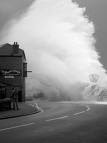Your first piece of coursework asks you to discuss how Shakespeare creates dramatic tension in the first half of Act Three of Romeo and Juliet.
It is an assignment that will be submitted for both your English GCSE and your English Literature GCSE.
If you are stuck for detailed ideas or were away when we looked at a section of the scene, you can find a PowerPoint version of the notes on the G drive under English and Media. It is in the Shakespeare folder, in the Romeo and Juliet folder, and the file is called Y10 Romeo Presentation. Or you can click on the link below:
http://www.redruth.cornwall.sch.uk/curriculum/english/dac/y10%20romeo%20presentation.pps
Key Points to remember:
* You must write about the play as a work of drama, not a 'story'
* You must constantly refer to what Shakespeare does
* You must refer to the impact of his decisions/techniques on the audience
* Try to show the examiner that you are consistently addressing the question set: refer to the question set as you write
* Show that you know and understand what has happened in the play up to this point
* Show that you understand the characters Shakespeare has created, and comment on how typical or untypical they are in this scene.
Remember the five aspects Shakespeare can manipulate as a playwright to create dramatic tension:
1. Audience Expectation - the use of warnings in the play, the hints of trouble to come
2. Audience Knowledge - he puts in motion, in this scene, characters that the audience already have a lot of awareness of; Tybalt, keen to fight in Act One, desperate to attack Romeo in the party scene; Mercutio, unstable and emotional before the party, cheeky and rude to the Nurse in Act Two, Benvolio, the peacemaker, already ineffectual at stopping a fight in Act One and here he goes again; Romeo, in love and, as such, dangerously out of touch with the conflict he has been encouraged, by Friar Lawrence, to believe he is helping to stop.
3. Entrances and Exits - look at how many there are, comment on the dramatic timing of these.
4. Actions - in this scene, there are many stage directions which indicate drmatic incidents, but also sometimes the words demand an accompanying action; think of the "Here's my fiddlestick" line.
5. Language - probably the most important thing to comment on. How does Shakespeare use it to create drama? Consider the contrasts between prose and verse, between lengthy speeches and short, between serious speeches and humorous ones. Consider the puns, the insults that occur. Consider the parallels and echoes in this scene: Mercutio's "O Romeo, Romeo...", the way Romeo and Tybalt start to use similar language to that used by Mercutio and Tybalt just before Mercutio's death.



